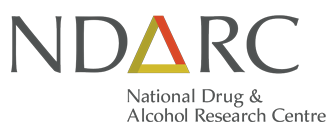04/2027
.png)
Project Collaborators External
- Olivia Price
- Emmert Roberts
The Opioid Agonist Treatment and Safety Studies use linked administrative data for opioid agonist treatment (OAT) recipients in NSW, Australia to understand mortality risk and another adverse outcomes during and after opioid agonist treatment. The studies have been conducted in two stages, corresponding to the original linkage (OATS I, commencing 2017) and revised linkage (OATS II, commencing 2022) of NSW administrative data.
In response to increasing opioid use in Australia and North America , a scale-up of treatment is needed. Opioid agonists are effective treatments for opioid dependence, but there are important questions regarding risk of adverse clinical outcomes, including death, that are yet to be answered. Who is most at risk of adverse outcomes? What patient, provider and treatment setting actors may influence this risk? This linked data project aims to provide answers to these and other questions. The aims of the OATS projects are:
Aim 1: Determine the magnitude of risk for specific adverse clinical outcomes (e.g. mortality, hospitalisation and ED presentation, and unplanned treatment cessation) during and after OAT with methadone and buprenorphine
Aim 2: Identify patient, treatment setting, and provider risk factors associated with adverse clinical outcomes during and after OAT with methadone and buprenorphine
Aim 3: Develop a risk prediction model to identify patients at greatest risk of adverse clinical outcomes during and after OAT
Design and Method
The original OATS I data linkage was a population cohort of OAT patients (n≈45,000) treated between 2001 (when buprenorphine became available for OAT in New South Wales) and 2016. These data were probabilistically linked to NSW hospitalisation, emergency department, incarceration and mortality data.
The revised (current) OATS II data linkage is a larger cohort with an expanded number of linked datasets. It is a population cohort of OAT patients (n≈55,000) treated between 2001 and 2022. These data have been probabilistically linked to NSW hospitalisation, emergency department, incarceration, perinatal, cancer, infectious diseases, ambulance and mortality data.
Both linkages have been undertaken by the NSW Centre for Health Record Linkage (CHeReL) using probabilistic record linkage methods and ChoiceMaker software.
Analysis for Aims 1 and 2 examines incidence and risk for specific clinical outcomes during OAT, with a special focus on the period of OAT induction, the remainder of time in OAT and the 4 weeks immediately following cessation of OAT. Adverse clinical outcomes to be examined will include all-cause and cause-specific (drug, self-harm/suicide, and injury-related) emergency department visits, hospitalisation and mortality and unplanned treatment cessation. Additional clinical outcomes to be examined in the revised linkage include infectious diseases, perinatal outcome and health outcomes at critical time points such as on release from incarceration. Aim 3 includes the development of a risk prediction model to identify patients at greatest risk of adverse outcomes during OAT. While Aims 1 and 2 are focused on understanding the magnitude of risk for an outcome associated with a specific factor, Aim 3 is focused on maximising the predictive ability of the model to enable the real-time identification of individual patients at risk of adverse clinical outcomes during OAT.
Progress/ Update
All analysis for the initial data linkage (OATS I) has been completed. The data for the revised data linkage (OATS II) has been linked, received and analysis is ongoing. The results from the OATS projects so far are summarised below.
Jones NR, Nielsen S, Farrell M, et al. Retention of opioid agonist treatment prescribers across New South Wales, Australia, 2001–2018: Implications for treatment systems and potential impact on client outcomes. Drug and Alcohol Dependence 2021; 219: 108464.
Lewer D, Jones NR, Hickman M, et al. Risk of discharge against medical advice among hospital inpatients with a history of opioid agonist therapy in New South Wales, Australia: A cohort study and nested crossover-cohort analysis. Drug Alcohol Depend 2020; 217: 108343.
Jones NR, Hickman M, Larney S, et al. Hospitalisations for non-fatal overdose among people with a history of opioid dependence in New South Wales, Australia, 2001-2018: Findings from the OATS retrospective cohort study. Drug Alcohol Depend 2020: 108354.
Lewer D, Jones NR, Hickman M, Nielsen S, Degenhardt L. Life expectancy of people who are dependent on opioids: A cohort study in New South Wales, Australia. J Psychiatr Res 2020; 130: 435-40.
Larney S, Hickman M, Fiellin DA, et al. Using routinely collected data to understand and predict adverse outcomes in opioid agonist treatment: Protocol for the Opioid Agonist Treatment Safety (OATS) Study. BMJ open 2018; 8(8): e025204.
Jones NR, Shanahan M, Dobbins T, et al. Reductions in emergency department presentations associated with opioid agonist treatment vary by geographic location: A retrospective study in New South Wales, Australia. Drug Alcohol Rev 2019; 38(6): 690-8.
Bharat C, Larney S, Barbieri S, et al. The effect of person, treatment and prescriber characteristics on retention in opioid agonist treatment: a 15-year retrospective cohort study. Addiction 2021.
Chaillon A, Bharat C, Stone J, et al. Modeling the population-level impact of opioid agonist treatment on mortality among people accessing treatment between 2001 and 2020 in New South Wales, Australia. Addiction 2021.
Colledge-Frisby S, Jones N, Larney S, et al. The impact of opioid agonist treatment on hospitalisations for injecting-related diseases among an opioid dependent population: A retrospective data linkage study. Drug and Alcohol Dependence 2022; 236: 109494.
Brothers TD, Lewer D, Jones N, et al. Opioid agonist treatment and risk of death or rehospitalisation following injection drug use-associated bacterial and fungal infections: A cohort study in New South Wales, Australia. PLoS Med 2022; 19(7): e1004049.
Jones NR, Hickman M, Nielsen S, et al. The impact of opioid agonist treatment on fatal and non-fatal drug overdose among people with a history of opioid dependence in NSW, Australia, 2001-2018: Findings from the OATS retrospective linkage study. Drug Alcohol Depend 2022; 236: 109464.
Larney S, Jones N, Fiellin DA, et al. Data resource profile: The Opioid Agonist Treatment and Safety (OATS) Study, New South Wales, Australia. Int J Epidemiol 2020.
Santo Jr TJ, Chaillon A, Martin N, Hickman M, Jones N, Farrell M, Bharat C, Degenhardt L, Borquez A, (2025) Quantifying the impact of a large-scale opioid agonist treatment program on suicide prevention in New South Wales Australia: A data-modeling study, Addiction. https://doi.org/10.1111/add.70018
Jones N, Ghouse FN, Gibson A, Tran DT, Santo Jr T, Bharat C, Farrell M, Degenhardt L (2025) Data Resource Profile Update: The Opioid Agonist Treatment and Safety II (OATS II) Study, 2001-22, New South Wales, Australia; International Journal of Epidemiology 5(2) https://doi.org/10.1093/ije/dyaf037
Gisev, N; Santo Jr, T; Lappin, J; Lintzeris, N; Gibson, A; Larney, S; Mills, L; Degenhardt, L; Jones, NR; (2025) The impact of severe mental illness on treatment retention and all-cause mortality of people in opioid agonist treatment: A retrospective cohort study. Drug and Alcohol Dependence, in press.
Larney S, Jones NR, Hickman M, Nielsen S, Ali R, Degenhardt L. Does opioid agonist treatment reduce overdose mortality risk in people who are older or have physical comorbidities? Cohort study using linked administrative health data in New South Wales, Australia, 2002-17. Addiction 2023. (https://doi.org/10.1111/add.16178)
Colledge-Frisby S, Jones N, Degenhardt L, et al. Incidence of suicide and self-harm among people with opioid use disorder and the impact of opioid agonist treatment: A retrospective data linkage study. Drug Alcohol Depend 2023; 246: 109851. (https://doi.org/10.1016/j.drugalcdep.2023.109851)
Downing, B.C., Hickman, M., Jones, N.R. et al, Prevalence of opioid dependence in New South Wales, Australia 2014-2016: indirect estimation from multiple data sources using a Bayesian approach. Addiction. 2023 Oct;118(10):1994-2006. doi: 10.1111/add.16268. Epub 2023 Jun 8
Brothers TD, Lewer D, Jones N, et al. Effect of incarceration and opioid agonist treatment transitions on risk of hospitalisation with injection drug use-associated bacterial infections: A self-controlled case series in New South Wales, Australia. Int J Drug Policy 2023; 122: 104218.Expected date of completion
Dr Amy Gibson
- Our team
- External








.cropimg.width=335.jpg)




